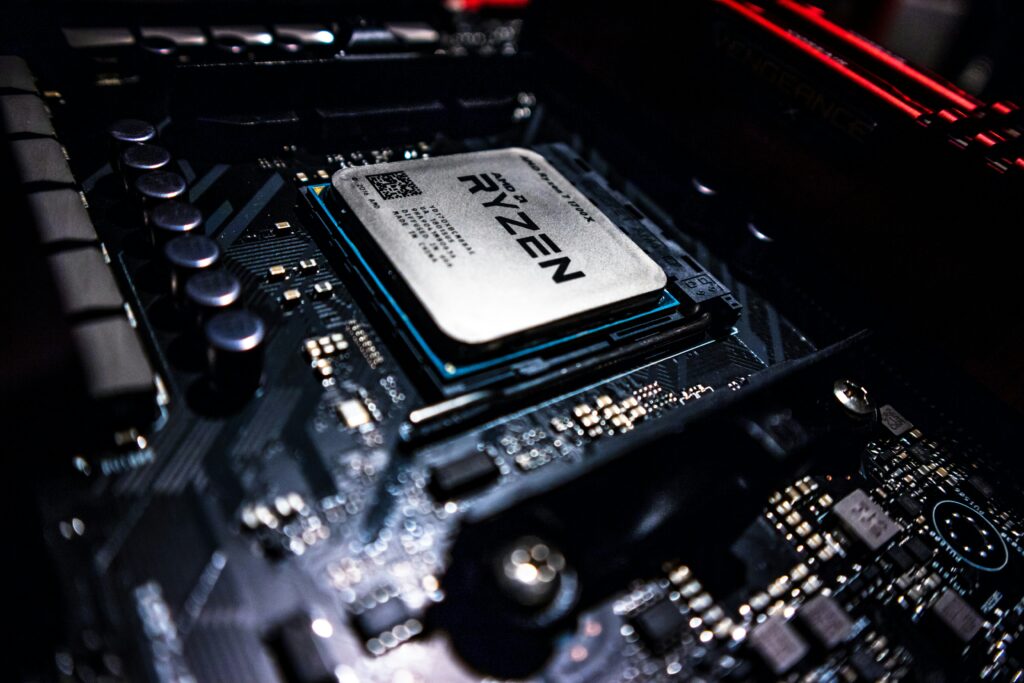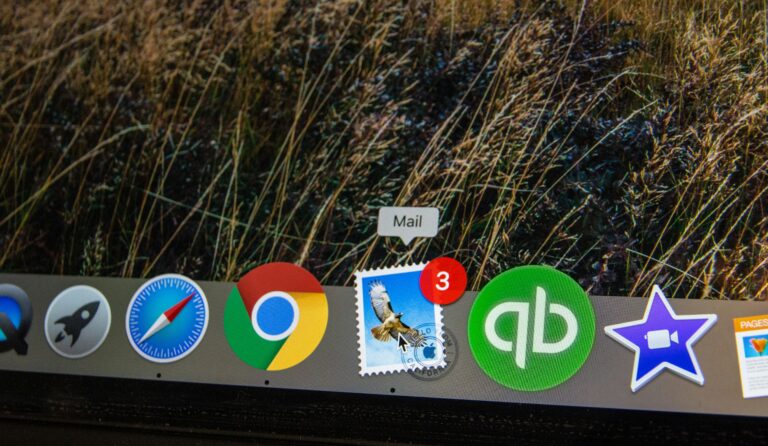In an era of rapid technological evolution, the modern smartphone has transformed from a simple communication device to a powerhouse of endless functionalities. The journey to harness the full potential of these sophisticated gadgets can appear daunting, especially for the uninitiated. This guide, titled “Unlocking the World of Smartphones: A Beginner’s Guide to Understanding the Basics and Maximizing Your Device’s Potential,” aims to enlighten those embarking on this exciting exploration.

The content, designed meticulously, provides a comprehensive tour through the world of smartphones, unraveling the mysteries behind the multitude of features, applications, and settings. It will delve into the basics, beginning with a clear explanation of operating systems, before advancing to the more complex facets like app management, customizability, and security features. The guide promises to arm you with the knowledge to master your smartphone, optimizing it to serve your unique needs and preferences.
Whether you are a tech novice just setting up your first smartphone or an existing user yearning to maximize your device’s potential, this guide offers invaluable insights. It will transition you from smartphone owner to smartphone power user, breaking down seemingly complex concepts into easily digestible chunks. Get ready to embark on a journey of discovery and empowerment, unlocking a world of possibilities right at your fingertips. 🌐📱💡
Understanding the Basics of Your Smartphone
First and foremost, it is essential to grasp the fundamentals of smartphones. These devices have become an indispensable part of our lives, yet many of us only use a fraction of their capabilities.
The Operating System (OS)
At the heart of every smartphone is the operating system (OS). This is the software that powers your phone, controls the hardware, and allows you to run apps. The two dominant smartphone operating systems are Google’s Android and Apple’s iOS.
Android is known for its openness and flexibility, with users having the ability to customize their device to their liking. On the other hand, iOS is known for its streamlined, user-friendly interface and tight integration with other Apple devices.
The User Interface (UI)
The User Interface (UI) is the way you interact with your smartphone. This includes everything from the touchscreen, buttons, and home screen, to the way you navigate and use apps. Both Android and iOS have their unique UIs, with different strengths and weaknesses. Understanding the UI is crucial to maximizing the potential of your smartphone.
Maximizing Your Device’s Potential
With the basic understanding in place, let’s delve into ways to fully utilize the capabilities of your smartphone.
Productivity Apps
Productivity-focused apps are essential tools for individuals who wish to optimize their time, streamline their tasks, and improve organizational efficiency. These applications often include:
- Note-taking apps such as Evernote, Microsoft OneNote, or Google Keep, which allow users to jot down ideas, create to-do lists, and store important information in a digital format.
- Calendar apps like Google Calendar, Apple Calendar, and Outlook help users schedule events, set reminders, and manage daily commitments with ease.
- Office suite applications such as Microsoft Office, Google Workspace (Docs, Sheets, Slides), and WPS Office provide mobile access to word processors, spreadsheets, and presentation tools, enabling you to work on documents from anywhere in the world.
With these apps at your fingertips, your smartphone becomes a portable productivity hub, empowering you to handle both personal and professional tasks efficiently and effectively.
Social Media Apps
Social media applications have revolutionized the way people communicate, share experiences, and interact in real time. These apps allow users to post updates, share photos and videos, engage in conversations, and follow the latest trends from around the globe. Key examples include:
- Facebook – a platform for social networking, community building, and media sharing.
- Instagram – known for its visual storytelling, photo filters, reels, and influencer culture.
- Twitter (X) – ideal for following real-time news, engaging in public discourse, and expressing short-form opinions.
- TikTok – a fast-growing app centered around short-form video content, creativity, and viral trends.
- Snapchat, LinkedIn, and Threads are also commonly used for both personal and professional interactions.
These platforms have become essential for maintaining relationships, promoting businesses, accessing news, and expressing creativity in the digital age.
Entertainment Apps
Entertainment applications cater to a wide array of interests, allowing users to relax, unwind, and enjoy multimedia experiences directly from their devices. These apps span across multiple categories, including:
- Streaming services such as Netflix, Amazon Prime Video, Disney+, and Hulu, which offer thousands of movies, TV shows, and documentaries.
- Music apps like Spotify, Apple Music, and YouTube Music enable users to stream millions of songs, create playlists, and discover new artists.
- Gaming apps, from casual hits like Candy Crush Saga and Angry Birds to more immersive experiences like PUBG Mobile, Call of Duty: Mobile, and Genshin Impact, transform your phone into a portable gaming console.
The availability of rich, engaging, and on-demand content ensures that there’s never a dull moment when you have your smartphone with you.
Customizing Your Smartphone
Beyond simply using apps, another impactful way to enhance the smartphone experience is through customization. Personalizing your device allows you to tailor its appearance, behavior, and interface to better suit your style, preferences, and workflow. This not only adds aesthetic appeal but also improves usability and satisfaction.
Android, renowned for its flexibility, offers users a wide range of customization options. You can:
- Change the home screen layout, add widgets, and rearrange app icons for quick access.
- Apply custom launchers like Nova Launcher or Microsoft Launcher to radically alter the look and navigation experience.
- Use themes and icon packs to reflect your aesthetic tastes, whether minimalist, futuristic, or vibrant.
- Modify system animations, default apps, and even the entire user interface with advanced tools and custom ROMs for those with technical knowledge.
On the other hand, iOS, Apple’s mobile operating system, is more restrictive in terms of customization but has gradually evolved to offer more flexibility in recent years. Users can:
With newer versions of iOS, you can even use third-party apps to create custom app icons and streamline app access.erything from the home screen layout to the entire look and feel of the OS. iOS, while no
Rearrange icons and place widgets on the home screen for better information visibility.
Customize the lock screen, set focus modes, and choose different wallpapers for different contexts.
Use Shortcuts to automate tasks and personalize functionality.
Securing Your Smartphone
As smartphones become increasingly integrated into our daily lives, serving as digital wallets, communication hubs, and repositories for sensitive information, the importance of ensuring their security cannot be overstated. Our growing reliance on these devices for personal, financial, and professional activities makes them prime targets for cybercriminals, data breaches, and malicious attacks. Securing your smartphone goes far beyond simply setting a lock screen password—it involves adopting a proactive and holistic approach to digital safety and privacy.
Keeping Your Smartphone Updated
One of the most fundamental, yet often overlooked, aspects of smartphone security is keeping the operating system and all installed apps updated. Both Android and iOS platforms regularly release software updates that include crucial security patches, performance improvements, and new features. These updates are designed to fix known vulnerabilities, address newly discovered bugs, and enhance the overall stability of the device.
Delaying or ignoring these updates can leave your smartphone exposed to exploitation by malicious software or unauthorized access. Enabling automatic updates, or regularly checking for and installing them manually, ensures that your device benefits from the latest security enhancements. It’s also important to keep all third-party applications up to date, as outdated apps can be a significant weak point in your device’s defense system.
Being Wary of App Permissions
Applications are the gateway to functionality on smartphones, but they can also serve as vectors for privacy violations if not managed properly. When you install an app, it may request access to various components of your smartphone, such as your camera, microphone, GPS location, contact list, call history, and even storage.
While some permissions are necessary for the app’s functionality, others may be excessive or irrelevant. Granting unnecessary permissions can lead to unauthorized data collection, location tracking, or even surveillance. It is imperative to carefully review each permission request and ask yourself whether it is justified. Both Android and iOS provide tools to manage app permissions, allowing users to revoke or limit access at any time.
Being vigilant about permissions not only safeguards your personal data but also reduces the risk of spyware, data leaks, and privacy intrusions. It is advisable to install apps only from trusted sources such as the Google Play Store or Apple App Store, and to read reviews and ratings to ensure the app’s legitimacy before installation.
Additional Tips for Smartphone Security
Beyond updates and permissions, there are several other steps you can take to bolster your smartphone’s security:
Backup your data regularly: In case your phone is lost, stolen, or compromised, having a secure backup ensures that your valuable data isn’t permanently lost.
Use strong authentication: Combine passwords with biometric security like fingerprint or facial recognition for enhanced protection.
Enable device encryption: Most modern smartphones come with encryption features that protect your data from unauthorized access.
Avoid public Wi-Fi for sensitive tasks: When on public networks, use a VPN to encrypt your internet traffic and shield your data.
Install reputable antivirus software: Especially on Android, a good security app can provide real-time protection against malware.
Understanding Smartphone Specifications

In today’s technologically driven world, smartphones have become essential tools for communication, entertainment, productivity, and much more. To truly unlock the full potential of these powerful handheld devices, it is crucial to gain a comprehensive understanding of their technical specifications. These specifications not only define the capabilities of a smartphone but also influence the user experience, performance, and long-term satisfaction.
Processor, RAM, and Storage
At the heart of every smartphone lies the processor, often referred to as the “central processing unit” (CPU). This component functions as the brain of the device, executing instructions, processing data, and running applications. The performance of a smartphone’s processor significantly impacts its speed, responsiveness, multitasking abilities, and overall efficiency. Modern smartphones may include multiple cores (dual-core, quad-core, octa-core) which allow for more seamless handling of complex tasks such as gaming, video editing, and real-time communication.
Random Access Memory (RAM) plays a crucial role in multitasking and operational fluidity. It provides temporary storage that the processor uses to access running applications and active processes. The more RAM a device has, the more apps it can run simultaneously without slowing down. Devices with limited RAM may experience lag or slowdowns when switching between applications or performing intensive tasks.
Storage, on the other hand, refers to the internal memory where all your data—including photos, videos, documents, apps, and system files—are permanently saved. Storage capacities can range from 32GB to 1TB or more. Some smartphones offer expandable storage through microSD cards, while others rely solely on internal storage. Having ample storage ensures that users can download large apps, save high-resolution media, and install system updates without running into memory limitations.
Camera and Display
One of the most marketed and sought-after features of modern smartphones is the camera. The quality of a smartphone camera is determined by a combination of hardware and software factors. These include megapixel count, aperture size, sensor size, image stabilization, and the presence of multiple lenses (such as ultra-wide, telephoto, and macro). Additionally, advanced software algorithms contribute to image processing, allowing for features like portrait mode, night mode, and AI-enhanced photography.
The display is another vital aspect of the smartphone experience. Display quality is defined by factors such as screen resolution (HD, Full HD, Quad HD, or 4K), pixel density (measured in pixels per inch or PPI), color accuracy, refresh rate (measured in Hz), brightness levels, and screen technology (LCD, OLED, AMOLED). A higher-resolution display with better color reproduction and faster refresh rates results in a more vibrant, immersive, and responsive visual experience—ideal for gaming, video playback, and browsing.
Making Informed Choices
Understanding these technical specifications empowers consumers to make informed decisions when purchasing a new smartphone. Whether you’re a casual user, a mobile gamer, a photography enthusiast, or a business professional, knowing how these components affect daily performance can help you choose a device tailored to your specific needs and preferences.
Conclusion
“Unlocking the World of Smartphones: A Beginner’s Guide to Understanding the Basics and Maximizing Your Device’s Potential” offers an insightful and comprehensive exploration of the smartphone universe. It goes beyond the basic functionalities, exposing readers to the vast potential of these devices that have become an essential part of our daily lives. The guide does an excellent job of demystifying complex concepts, making it a valuable resource for both tech newbies and savvy users.
Moreover, it emphasizes the importance of maximizing the utility of our smartphones. It isn’t just about using them for calls, texts, or social media, but also for enhancing productivity, entertainment, and overall digital experience. Notably, the guide reminds us that our devices’ potential is often underutilized, and by understanding their capabilities, we can unlock endless possibilities.
Whether you’re a smartphone rookie or a seasoned user seeking to get more from your device, this guide is a must-read. In a world where technology is constantly evolving, keeping abreast of such knowledge is pivotal.
To sum up, the guide isn’t just an introduction to smartphones; it’s a roadmap to leveraging technology to improve our lives. Get ready to unlock your smartphone’s full potential and step into the future, today.



